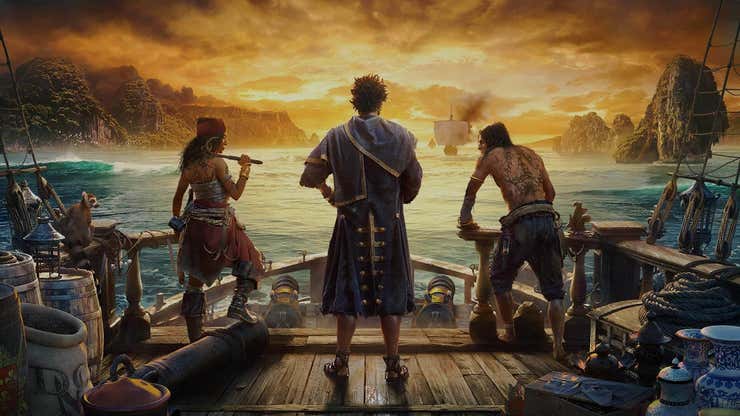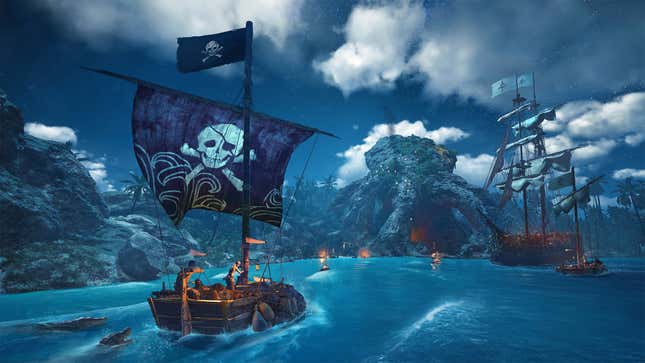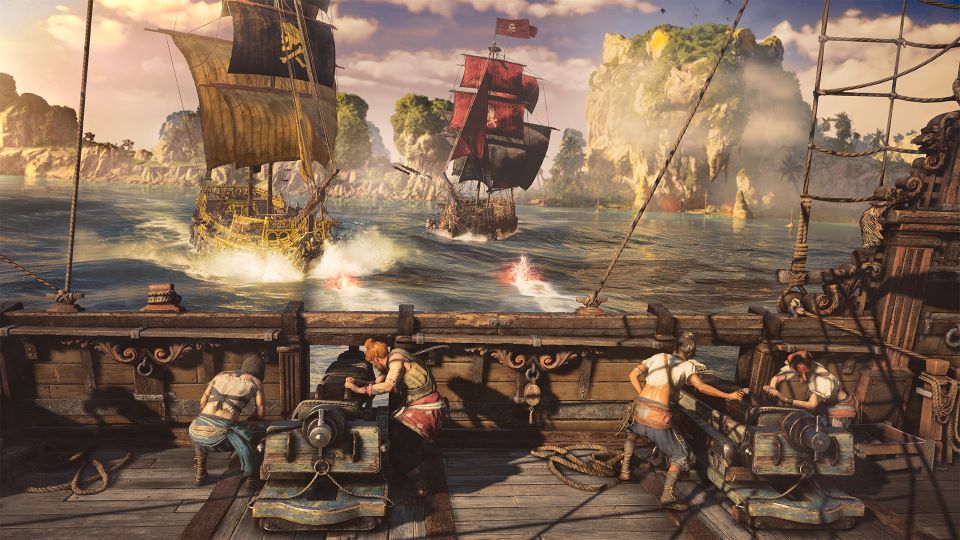In the vast seas of Skull and Bones, players are thrust into the midst of intense naval warfare, facing off against the formidable Dutch navy and engaging in thrilling ship-to-ship combat. However, amidst the chaos of battle, the game’s shortcomings become apparent.
Yo-Ho-Ho and a Bottle of None
In delving deeper into Skull and Bones, it becomes evident that while the game excels in delivering intense naval combat, it falls short in several key areas. One glaring issue is the lack of consequences for failure. Despite facing formidable adversaries and engaging in high-stakes battles, the absence of meaningful repercussions diminishes the sense of challenge and urgency.

Furthermore, the game’s narrative feels lacking, failing to immerse players in a compelling story or vibrant world. Without memorable characters or engaging plotlines, Skull and Bones struggles to captivate players beyond the excitement of naval warfare. Additionally, the absence of interactive social hubs and exploration opportunities leaves players longing for more depth and variety in gameplay.
Moreover, the game’s mechanics feel shallow, with limited features such as hand-to-hand combat, faction systems, or meaningful player decisions. This lack of depth detracts from the overall experience, leaving players craving more immersive and engaging gameplay elements.
In my experience, attempts to engage with other players during PvE encounters often resulted in disappointment, as calls for assistance went unanswered. This highlights a broader issue of player engagement and collaboration within the game’s community, posing a challenge for those seeking interactive multiplayer experiences.
While Skull and Bones may offer a tantalizing glimpse into the world of pirate adventures, its shortcomings ultimately detract from the overall experience. Without meaningful consequences, a compelling narrative, or engaging gameplay mechanics, the game struggles to fulfill its potential and may leave players yearning for a more immersive and fulfilling gaming experience.
Oceans Are Now Battlefields
Delving into the intricate gameplay mechanics of Skull and Bones reveals a mixed bag of strengths and weaknesses. Central to the experience is the progression system, where players embark on a quest for a better ship, starting with modest vessels ranked 2 or 3 on an 11-point scale. The ship’s rank is determined by its loadout, encompassing weapons, armor, and “furniture” that bestows various buffs and special effects. For instance, a modified forge on the ship can gradually repair damage over time, a crucial asset in the heat of battle.

Acquiring upgrades and new ships is a multi-faceted process, involving completing missions, looting defeated adversaries, and engaging in the intricate craft of shipbuilding. The thrill of obtaining elusive resources or stumbling upon coveted blueprints adds a tangible sense of progression and achievement. It’s a system that rewards perseverance and exploration, offering a gratifying journey through the ranks of pirate infamy.
However, Skull and Bones truly shines in its naval combat mechanics. With an arsenal of weapons and ship configurations at their disposal, players can experiment with a plethora of combat strategies, from long-range artillery barrages to close-quarters skirmishes. The fluidity and responsiveness of the controls make executing daring maneuvers and pulling off precision shots a joyous experience, even for those with mediocre aim.
Yet, amidst the exhilarating chaos of battle, one notable absence stands out: collision damage. While it streamlines navigation and allows for seamless traversal of treacherous waters, the lack of repercussions for reckless sailing diminishes the sense of realism and consequence. Whether deliberately ramming into obstacles or carelessly navigating through tight spaces, players can do so with impunity, detracting from the immersion and challenge of the gameplay.
Skull and Bones is undeniably focused on one thing: naval combat. Its emphasis on delivering thrilling ship-to-ship engagements is evident in every aspect of its design. While this singular focus ensures a streamlined and cohesive experience, it also leaves little room for diversions or additional gameplay elements. However, for players enamored with the allure of high-seas adventure and explosive battles, Skull and Bones offers a satisfying and immersive experience that delivers exactly what it promises: the thrill of maritime combat on the open ocean.
At World’s End
As players progress through Skull and Bones, the initial excitement of naval combat gradually gives way to the realization that the open seas can only offer so much. The game’s endgame content, while promising in theory, falls short of providing a truly satisfying and engaging experience.

One of the primary endgame paths revolves around a smuggling system known as The Helm. Tasked with producing illicit goods like rum and opium and delivering them to various customers, players soon find themselves entangled in a repetitive and uninspired gameplay loop. The allure of smuggling quickly fades as players encounter a never-ending stream of rogue pirates, impeding their progress and stifling any sense of accomplishment.
Compounding the issue is the inability to utilize the fast-travel system for shortcuts, forcing players to endure tedious journeys across the vast expanse of the game world. What initially seemed like an exciting opportunity for lucrative ventures soon devolves into a monotonous chore, overshadowing the thrill of exploration and discovery.
Furthermore, the absence of meaningful PvP and PvE events further detracts from the endgame experience. While there are sporadic opportunities for player-versus-player encounters tied to the cargo-smuggling mechanic, they fail to provide the dynamic and engaging gameplay that players crave. Similarly, PvE events require participation from strangers, often resulting in frustration and disappointment as fellow players fail to answer the call for assistance.
As a result, endgame progression becomes hindered by a significant blockade, with certain resources only accessible through high-level raids that are impossible to complete alone. The lack of viable options for solo players exacerbates this issue, leaving many feeling isolated and unable to progress further.
The future of Skull and Bones hangs in the balance as Ubisoft’s roadmap for the game remains uncertain. While speculation abounds regarding potential updates and expansions, the reality is that many promised features have yet to materialize. Without tangible improvements to address the game’s endgame shortcomings, Skull and Bones risks alienating its player base and fading into obscurity.
In conclusion, Skull and Bones’ endgame content fails to deliver on its promise of exciting and engaging challenges. Instead, players are met with repetitive tasks, uninspired gameplay mechanics, and a lack of meaningful progression. Unless significant improvements are made, the game’s future hangs in the balance, leaving players questioning whether the adventure on the high seas is truly worth embarking upon.
Here, please join us for more information with: Akiba – Games
